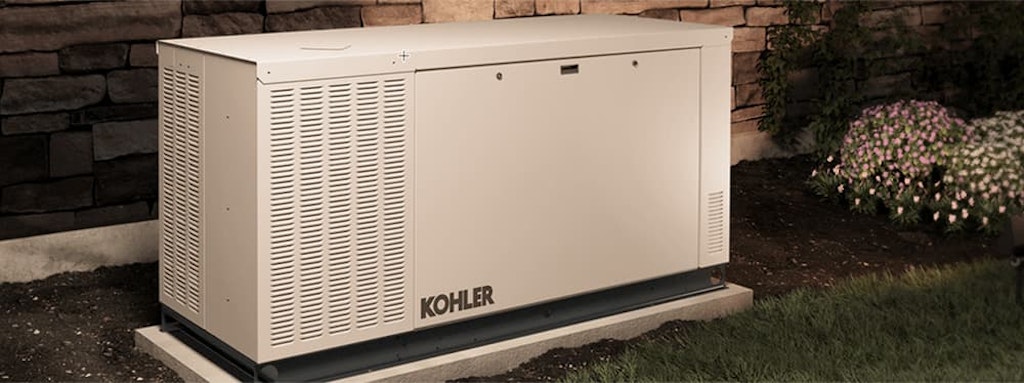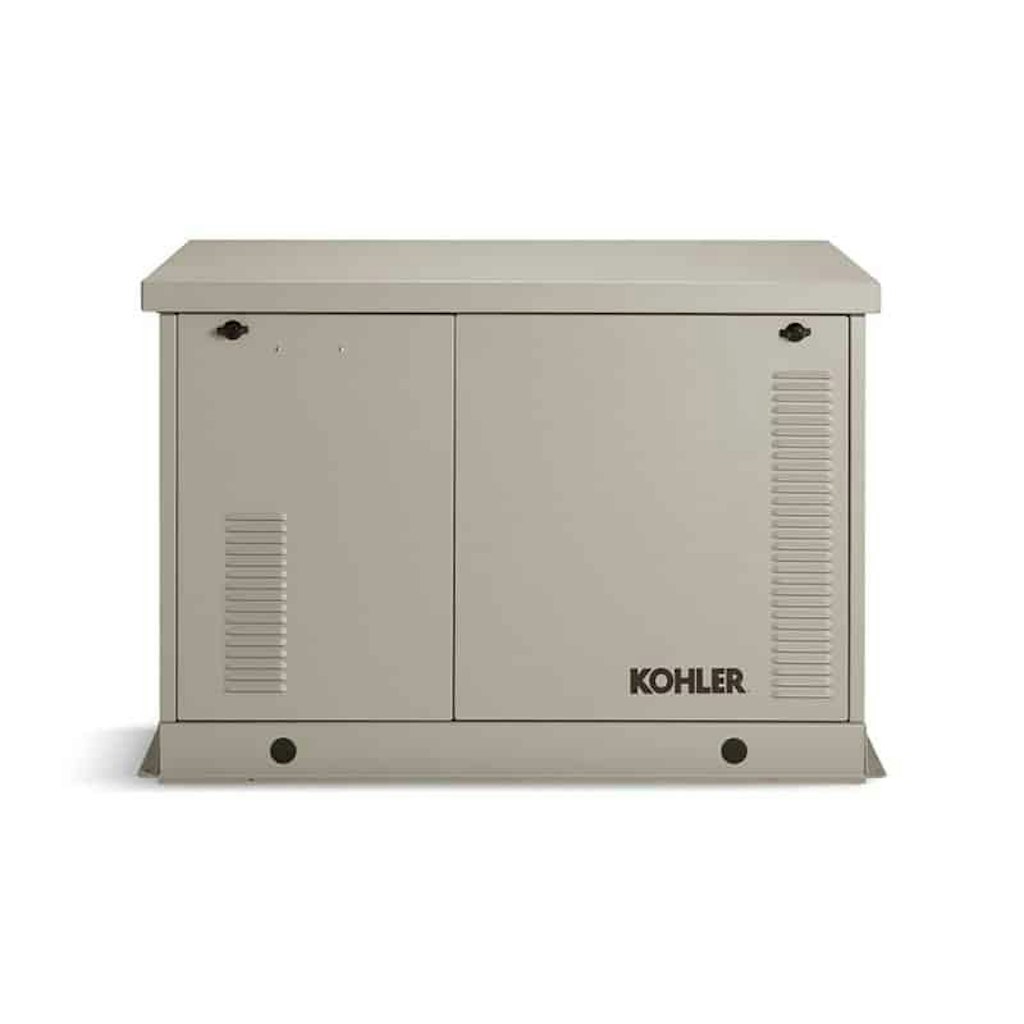Most off-grid solar systems are paired with a generator. Without utility power as a fallback, off-grid setups need a backup plan in case their solar system can’t produce enough to meet the property’s needs.
Gas generators are used in off-grid systems as a backup charging source to recharge the battery bank when solar can’t keep up with demand. They are also used for backup power in case equipment fails and the inverter system needs to be bypassed.
Here’s our advice on how to pick a generator for your off-grid solar system.
Generator Sizing
As a general rule, the generator should be around 2 times the size of the inverter’s continuous output. For example, a 4,000-watt inverter should be paired with an 8,000-watt generator.
This is because the generator needs to charge batteries while still powering the loads (appliances using energy). If the loads total 4,000 watts, and the charger is 60 amps at 48 volts, that totals around 7kW of continuous power:
60a x 48v = 2,880 watts + 4,000 watts = 6,880 watts
8kW would make sense as a minimum generator size to power the loads and have enough power to charge the battery bank as well.
It’s a good idea to round up slightly to give some headroom for the generator, especially at higher elevations where your generator is going to lose some of its power. Engines can lose around 3% of their power for every 1,000’ increase in altitude. Make sure you account for this if your system will be installed at a high elevation.
Can I Use a Larger Generator?
A larger generator can be beneficial if you have large loads like an air conditioner or a welder that will only be used when the generator is running.
We frequently sell 12kW and 14kW Kohler generators with our off-grid systems using a 4000w inverter. A larger generator is going to burn more fuel, but otherwise will work fine.

Can I Use a Smaller Generator?
Smaller generators will still work, but it typically requires adjusting the settings to limit the battery charger’s output. Most battery chargers allow you to adjust the AC input amperage and charge rate.
You will need to match the generator’s voltage with the inverter. For example, 120Vac generators should be paired with 120Vac inverter/chargers, while 120/240Vac generators need an inverter that outputs 120/240Vac.
In the rare case that you are using a three-phase generator or inverter, the same rules apply: the generator’s voltage would need to match the inverter.
There is one exception we are aware of. Magnum PAE inverters are 120/240Vac but can handle a 120Vac input, provided you turn down the charge rate to 50% or lower, and adjust the AC input amps to match the size of the generator. This is useful if you need an inverter that can output 120/240Vac but are working with a smaller generator.
Generator Fuel Type (Natural Gas, Propane, Diesel)
Most standby home generators work on natural gas, propane or diesel. Diesel generators tend to be much more fuel efficient and longer lasting, but the initial cost can be 2-3 times more than a natural gas or propane alternative.
The Kohler 12kW & 14kW generators we sell can work with either natural gas or propane. Off-grid customers typically use propane instead of natural gas, but these models can be configured to work with either fuel type.
Other Considerations
Warranty
Most generators don’t have a warranty that covers off-grid or prime power applications. Check the generator warranty closely to be sure it can be used off the grid.
Kohler’s 12RES and 14RESA generators are both warrantied for 18 months / 1000 hours of off-grid use (whichever comes first).
If you need more power, dual 14RESA generators can be combined in parallel with the Kohler Powersync module for 28 kW of output.

2-wire start
Off-grid generators paired with solar power systems need 2-wire start capability to allow the automatic generator start (AGS) function to work. When your batteries drop below a certain voltage, the AGS kicks in to turn on the generator and recharge your battery bank.
Note that 2-wire start is different than electric start. Some generators will have a button for electric start/stop, but they can’t be controlled by a 2-wire signal, which means the inverter can’t communicate with the generator to trigger the AGS mechanism.
The Kohler 12RES and 14RESA are both capable of two-wire start.
1800 RPM vs. 3600 RPM
Most generators operate at one of two engine speeds: 1800 or 3600 RPM.
The difference is based on engine design and the alternator being used. 1800 RPM generators are generally considered superior because they are more fuel-efficient, but they cost quite a bit more up front. 3600 RPM generators tend to be cheaper but less efficient.
The Kohler 12kW and 14kW generators we sell are 3600 RPM. They are very durable, reliable and more cost-effective for typical off-grid applications. Kohler doesn’t make any 1800 RPM generators smaller than 24kW, although there may be options from other manufacturers. Be sure to do your research and read reviews to learn about the company and make sure you are getting a quality product.
Conclusion
When searching for a generator to support your off-grid solar system, keep a few things in mind:
- Generator output should be 2x your inverter’s output
- Match generator voltage to inverter voltage
- Generator must be warrantied for off-grid use
- 2-wire start is mandatory to work automatically with solar system
- 3600 RPM generators are more cost-effective, while 1800 RPM generators cost more up front but last longer and are more efficient
For more help moving off the grid, check out our Solar Battery Guide, which explains how to size and select a battery bank to adequately support your energy needs off the grid.




